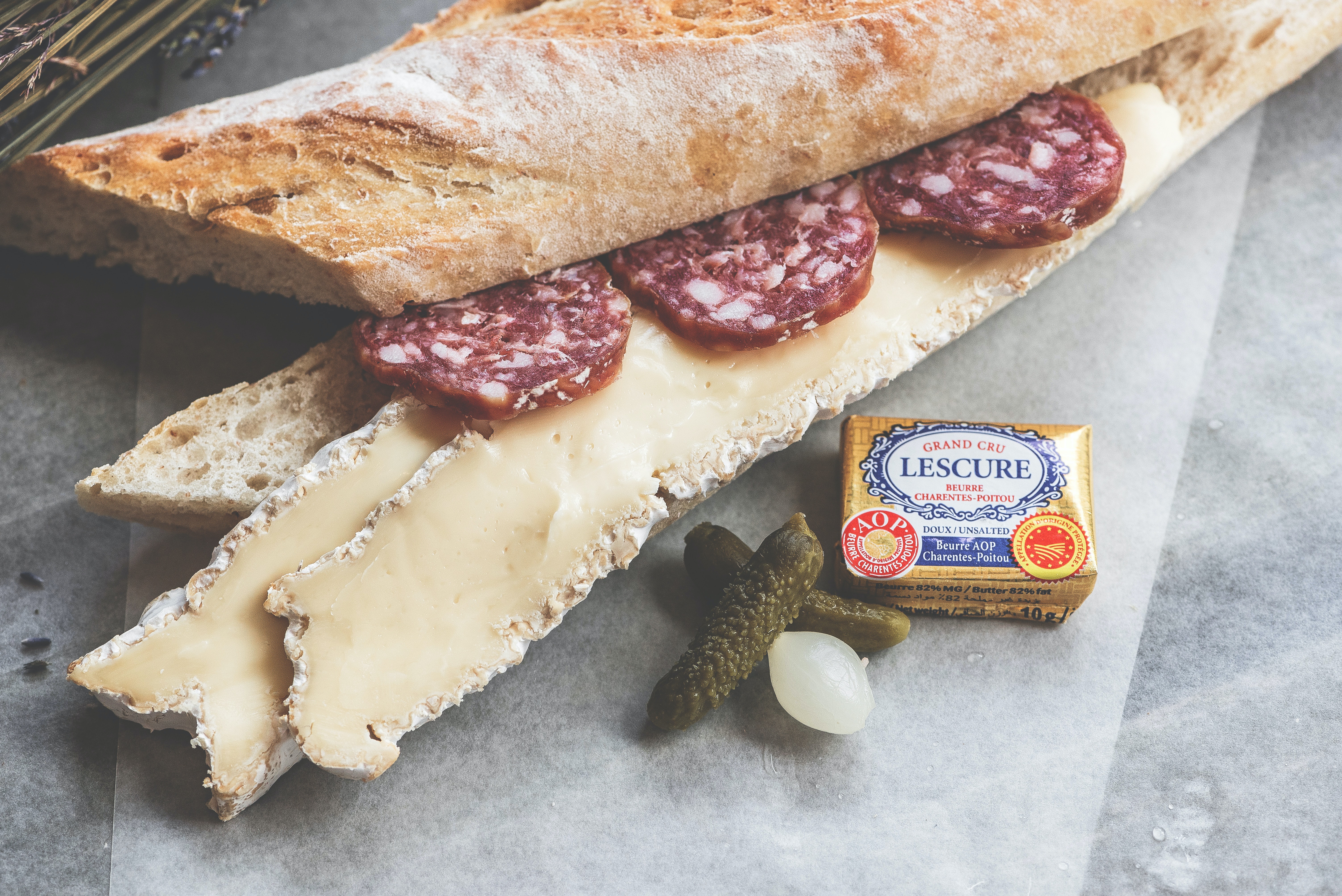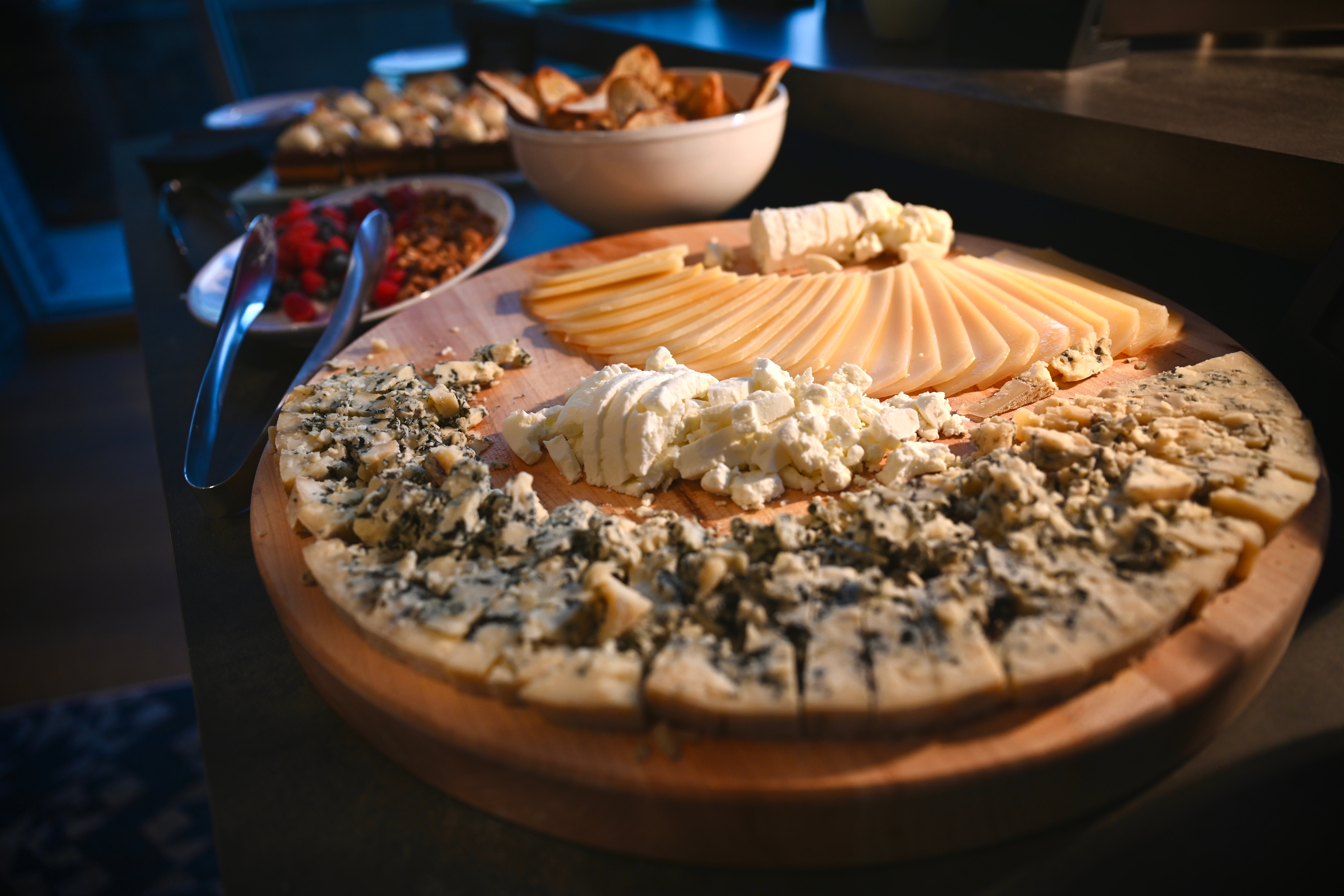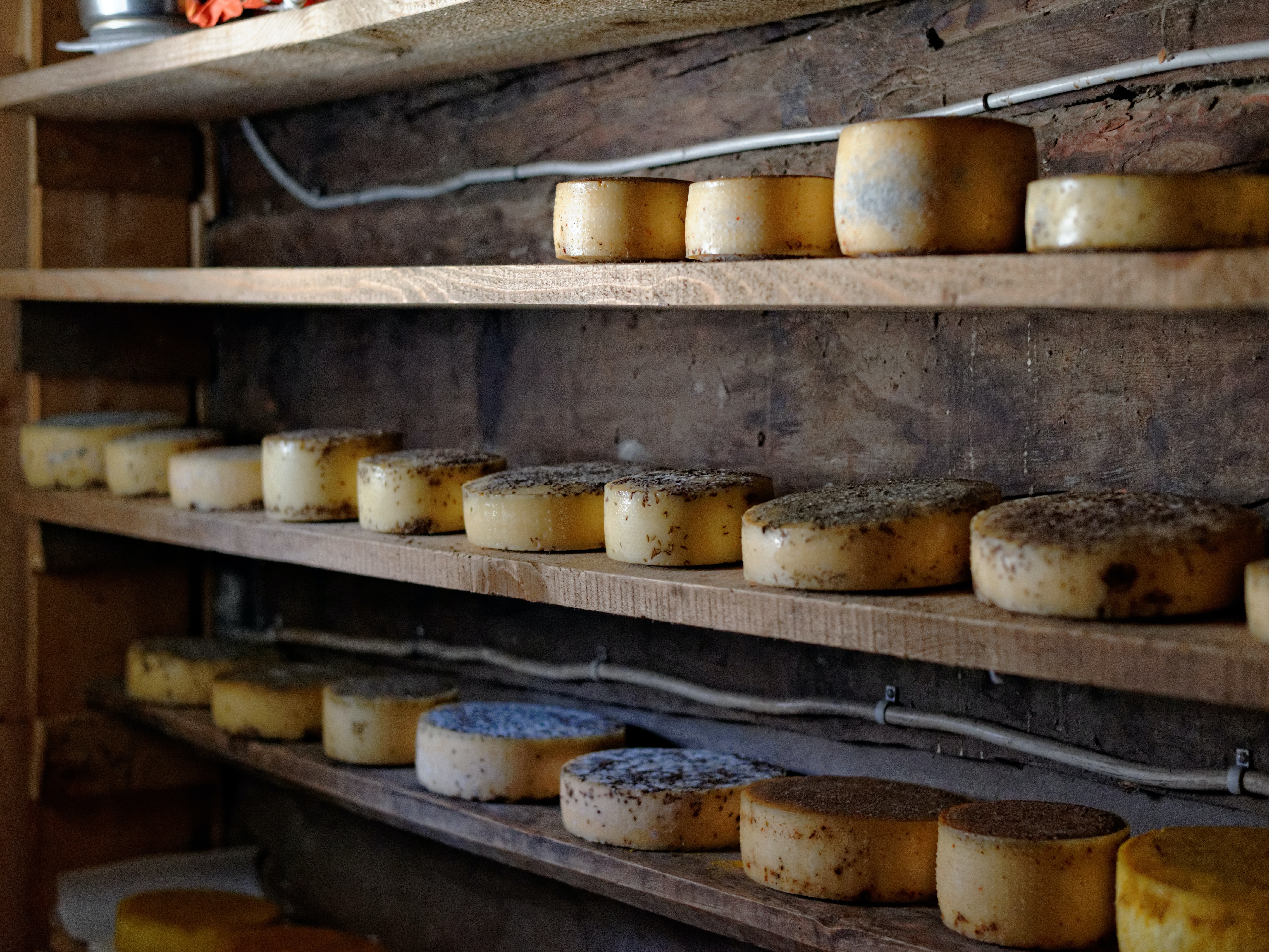Cheese is a joy. It’s also amazingly varied — from the actual source milk to the deeply diverse flavors you can draw from a little rennet, salt, and bacteria combined with time and atmosphere. In those regards, it’s not wholly different from other aged products we profile — wine, whiskey, rum, and the like.
Food memoirist Hannah Howard has a love of cheese that runs deep. Her widely-acclaimed new book — Plenty: A Memoir of Food and Family — touches on this passion point while also highlighting women in culinary pursuits around the globe (including a cheesemaker). Given my own love of cheese, we knew we had to hop on the phone to chat about both the book and our favorite cheeses.
Howard was kind enough to drop some serious recommendations for American cheeses you should try in the back half of our chat. These are kinds of cheese that are both delicious and accessible — you can buy them in the U.S. and, in most places, get them delivered right to your door. Her expertise is on full display, as is the abiding passion for food that helped make her memoir so captivating.
Let’s get into it!

What brought you to the point where you actually wrote this wonderful book about women in food with a great section about amazing cheese?
A lot of my career has been in cheese. I’ve always liked cheese. Who doesn’t? But the thing that really sparked my cheese imagination and passion was the first restaurant job that I got when I was 18, that I found on Craigslist. I was going to college in New York City and I ended up at this Michelin-starred fine dining old school French restaurant, and they had this incredible cheese cart. I knew that cheese was delicious, but I had no idea that it was this whole world of flavor. I wanted to be by the cheese cart at the beginning of service when they were setting up and unpacking these cheeses. And if you were lucky, you’d get a taste of something.
Since then, I’ve been lucky enough to work with cheese in restaurants, in retail, and in all kinds of capacities. There are a few things that I love about it. One is that cheese is just made from mostly milk and then a little salt, a little rennet, a little culture. So with those four ingredients, you get everything from a decadent triple creme to a super-aged Gouda, to any cheese you can think of. It’s just so cool how cheese is so diverse with just four ingredients. And then I also love the way that cheese has been a part of history and culture for as long as we’ve had people, almost.
I have a similar experience. I was in college in D.C., working at a Neapolitan pizzeria. We aged all our cheeses and meats in-house or imported them from Italy. The “ah-ha!” moment for me was our gorgonzola and honey-walnut dessert course that was just this beautiful chunk of gorgonzola with fresh local honey, and sweet, roasted walnuts. It was just one of those things where your brain wakes up when you have it, you know?
Yes. That sounds absolutely delicious.
As you said, cheese is inherently very, very simple… yet you have this massive variety. When you’re putting together a book on foods and you can only devote so much space to certain subjects, how do you make decisions about what and who you want to highlight, especially with such a massive segment of food like cheese?
I started off thinking I was going to write about celebrities or people with lots of accolades and success. Not to say that the women I wrote about were not successful — they absolutely are. It ended up being much more personal. I ended up writing about women in the food world who either were my friends and mentors or who I wanted to be my friends and mentors. I’ve met so many more amazing women throughout my food adventures. It could be so many books, but at the end of the day, I think I wanted to represent people doing really different things. So there’s a cheese maker in the book. There’s a sommelier. There’s a barge pilot. There’s a cooking instructor. These are the kind of people forging their way in the industry.
I use my own personal selfishness — wanting to know these women and understand what they were doing — as a way to figure out who was going to be in the book and how I was going to organize the book.
By telling these people’s stories, what sort of responsibility did you feel? How hard was it to find the right people to tell the right stories?
I think, and hope, I found the right people to tell their stories. But I did feel a responsibility to these people because my first book was more of just a straight memoir about my own story. It’s my story. So there seems to be a huge amount of trust that these women had, to let me into their lives, and into their kitchens, into their work, and trust me to share their stories. Which was not something I took lightly. I really wanted to try to capture that it wasn’t just about the shiny, easy parts.
I also wanted to write about their challenges and things that were personal and things that were hard. So I felt really genuinely grateful that they trusted me with that, and that they all seem to be relatively happy about the book.

That’s the beauty of food, right? It’s sort of a bottomless well of opportunity to write about, talk about, and eat, of course. I feel like you’re never going to find the end if you’re willing to look.
That’s what I feel like. Sometimes I think, “Oh, okay. Food…” I wrote a lot about food for a long time. But then for me, it is really the people behind all the food that keep it really, really fresh. And, exactly — there are endless possibilities there.
When you look at our history with something like cheese in America, it feels like either you grew up exposed to a lot of great cheese because of an immigrant background with access to unique delis, or you sort of grew up with American slices and whizz. How was your experience growing up with cheese in America?
I was lucky to come from a family that really did appreciate and love food. Some of my best childhood memories are going grocery shopping with my mom and we’d always pop around to a bunch of different stores. I grew up in Baltimore and went to Mastellone’s, which was like this little Italian store. Mrs. Mastellone would be making mozzarella from fresh curds. We’d go to the nearest bakery and there was incredible feta there. So I definitely had probably more access to more, not just cheese, but more different ingredients and food experiences than most American kids in the 80s, I would say.
Then, as I’ve pursued this as a career, I’ve been even luckier. I think also, since the 80s we’ve come a really, really long way in our own. One of the women in my book is Allison Hooper who founded Vermont Creamery around the time I was born. And she started to make goat cheese in Vermont. At the time people were like, “goat cheese is weird,” and “we don’t know what that is,” and, “we don’t want it.” Now it’s ubiquitous. I think it still has a long way to go, but I feel like there has been a revolution in the availability, quality, and knowledge about cheese.
Absolutely.
Let’s shift a bit. People often look to food writers for recommendations for better or worse. When someone comes to you and asks you, “What’s a cheese I can get into if I only like, say, plain yellow cheddar?” What cheese would you lead them to first?
When I worked behind the cheese counter, there were a few kinds of cheese that you just knew were going to be hits. One of the cheeses that I love to introduce curious people to is really well-aged gouda. Because as it ages it gets those amazing terracing crystals that are protein amino acids. It also just develops this incredible caramelized sweetness. It’s almost like candy for grownups. There’s sort of a butterscotch quality; it’s really hard for people not to like that, from novices to experts. So that’s like a great starter cheese.
We used to always joke about Malbec and Manchego because everyone thought of that. Manchego is really popular; I just wrote an article about how popular it is these days. It’s a sheep’s milk cheese. It’s definitely a gateway into trying some broader cheese flavors and textures. There’s a cheese from Cypress Grove in California called Midnight Moon that’s a very approachable aged cheese, that also everybody seems to love. So those are some of my starters, branching out, but not in such a crazy way.
Then there’s the advanced stuff. I like winning people over with seemingly funky cheese. One of my favorites is creamy gorgonzola instead of the hard one. If you just get past that mold, you’re in for sure a creamy treat.
Totally. Gorgonzola Dolce, right?
That’s the one.
That’s perfect, especially if you’re ambivalent about bleu cheese. But it’s so sweet and creamy. I love it with some honey… Oh my gosh. It’s really hard not to love that.
I feel, for a lot of people, if you can get them past the look of the green mold and just get them to take a bite…
Right. Close their eyes and enjoy it!

When it comes to more advanced cheeses, has there been a cheese that’s surprised you? One you weren’t into that has become a cheese that you now love?
I remember being the weird kid who — when my parents had a dinner party — wanted to eat the bleu cheese. I’ve always known that I was down for the bigger flavors, less approachable flavors. But I think I have grown even more through the years. My favorite cheese genre is definitely those stinky, washed-rind cheeses, where you cut off the top and then use a baguette to dip in. I think that it’s hard to get some of the best ones from Europe in the U.S. We do have some, but it’s just a lot more limited. We can’t import raw milk cheeses unless they’re aged for 60 days, so we don’t get those really funky ones.
My really good friend smuggled a wheel of Vacherin Mont D’or — which is this incredible cheese that’s only made seasonally — in her suitcase for me. And I was like, “Oh, this is a good friend!” because it’s pretty pungent cheese.
Yeah. That’s a lifelong friend right there.
Exactly! She’s pretty much my best friend. There are some cheeses that are inspired by that here that are only made seasonally. So now that it’s fall, I can get excited about getting to dig into those soon.
There’s one called Rush Creek Reserve from Uplands Cheese Company, which is just incredible. There’s Jasper Hill, in Vermont, which makes Winnimere, which is wrapped in spruce and also inspired by that. I love that. Something about that luscious, gooey texture and that funk, and that there are so many layers going on. Even though these cheeses are a little stinky, they’re not one note at all. They’re really complex and there’s a lot going on. I think they sometimes just get cast aside, but those are my favorite kinds of cheeses.
I feel like even with the funkier ones that if you really give it a second, you’re going to find grassy notes, you’re going to find mossy notes, you’re going to find nutty notes. You’re going to find other things beneath that first sensation that will draw you in and create a greater whole.
Absolutely. I think a lot of times too, the bark is bigger than the bite. It smells really intense, but then exactly what you said, the actual taste has so much more going on.
Not to always bring it back to Europe, but it’s very common here to cook with cheese but the cheese is the star of the show. Obviously, there’s gratins and cacio e pepe, and things where you cook with cheese as an ingredient. But I’m talking more grilling cheese, baked Camembert, things like that where the cheese in the main course. Is that something you’re seeing a bit more of in the States?
Yeah. I do. I think probably that TikTok and Instagram are helpful for that. Also just the pandemic, and people cooking more. I think cheese is such a great ingredient in any kitchen. The viral feta dish certainty helped. That’s just the start for sure.
I have a friend who writes recipes for The New York Times and we joke that a lot of her recipes have feta. I just made one of her sheet pan meals that involved feta and a bunch of other things, and it was super delicious. I feel like exploring different cheeses is such a fun way to step up your game in the kitchen a little bit.
You can purchase Hannah Howard’s new book, ‘Plenty: A Memoir of Food and Family,’ in all formats here.







